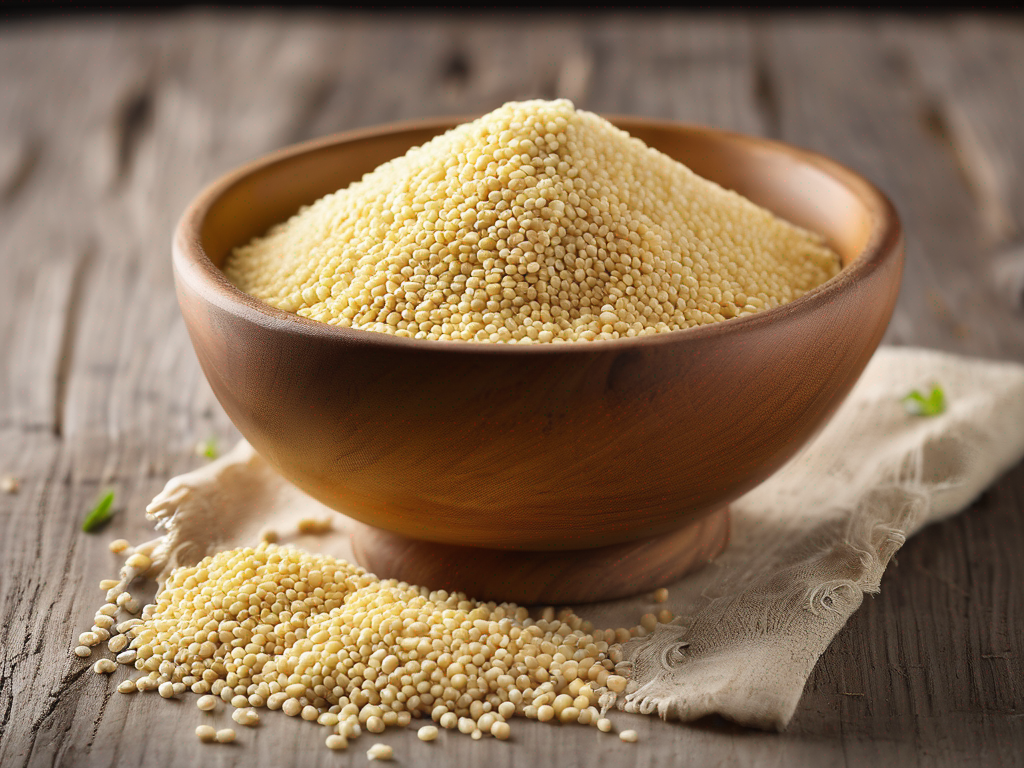
Is My Millet Still Safe to Eat? How to Tell if Your Millet Has Gone Bad
Get Your Free Food Safety Cheat Sheet
30 most common foods with instant answers. Print it and stick it on your fridge—completely free!
Is My Millet Still Safe to Eat? How to Tell if Your Millet Has Gone Bad
Millet is a nutritious and versatile grain that has gained popularity in recent years due to its health benefits and gluten-free nature. Whether you use millet in porridge, salads, or as a side dish, it's essential to ensure that your millet is fresh and safe to eat. In this blog post, we will discuss how you can tell if your millet has gone bad and provide you with practical tips on millet storage and food safety. (Millet)
Signs of Spoiled Millet
Visual Inspection
One of the simplest ways to determine if your millet has gone bad is by visually inspecting it. Look for the following signs of spoilage:
- Mold: If you see any fuzzy patches or discoloration on the millet, it is likely moldy and should be discarded.
- Unusual Color: Fresh millet should have a light yellow color. If you notice any dark spots or a change in color, it may indicate spoilage.
- Pests: Check for any signs of insect infestation, such as tiny bugs or larvae, which can indicate that the millet is no longer safe to eat.
Smell Test
Another way to determine if your millet has gone bad is by using your sense of smell. Spoiled millet may have a musty or sour odor, signaling that it has started to deteriorate.
Texture Check
Fresh millet should have a dry and firm texture. If you notice any clumping, stickiness, or a slimy texture, it is best to discard the millet as it may be spoiled.
Proper Millet Storage Tips
To prolong the shelf life of your millet and maintain its freshness, follow these storage tips:
-
Store in an Airtight Container: Transfer your millet to an airtight container to protect it from moisture, pests, and odors.
-
Cool and Dark Place: Keep your millet in a cool, dark place away from direct sunlight and heat sources to prevent it from spoiling.
-
Avoid Humidity: Moisture can cause millet to spoil quickly, so make sure the storage area is dry and well-ventilated.
-
Label and Date: To keep track of the freshness of your millet, label the container with the date of purchase or expiration.
Millet Shelf Life
Properly stored millet can last for an extended period. Here are some general guidelines for the shelf life of millet:
-
Whole Millet: Stored in a cool, dry place, whole millet can last for up to 2 years.
-
Millet Flour: Millet flour has a shorter shelf life and should be used within 6-8 months for optimal freshness.
Cooking and Eating Millet Safely
When preparing millet dishes, ensure that you follow these food safety tips:
-
Thorough Cooking: Cook millet thoroughly to kill any harmful bacteria or pathogens that may be present.
-
Proper Handling: Wash your hands and cooking utensils before handling millet to prevent cross-contamination.
-
Storage of Cooked Millet: If you have leftover cooked millet, store it in the refrigerator in an airtight container and consume it within 3-5 days.
Conclusion
In conclusion, it is essential to inspect your millet for any signs of spoilage before consuming it. By following proper storage practices, you can prolong the shelf life of your millet and enjoy it in various dishes. Remember to trust your senses when determining if your millet has gone bad and always prioritize food safety when cooking and handling millet. By taking these precautions, you can ensure that your millet dishes are not only delicious but also safe to eat.
For more information on millet and other food safety tips, visit millet. Stay safe and enjoy your millet dishes! (Millet)
Authoritative Food Safety References
These agencies and university labs inform every tip and health precaution we publish.
USDA FoodKeeper – Cold Storage Guidelines
Official refrigerator, freezer, and pantry timelines maintained by the U.S. Department of Agriculture.
Visit USDA FoodKeeperFDA Produce Safety Rule & Grower Guidance
Field-to-fridge handling practices that prevent contamination of fruits, vegetables, and leafy greens.
Visit FDA Produce SafetyCDC Foodborne Illness Prevention Hub
Surveillance-backed guidance on pathogens, symptoms, and steps to reduce foodborne illness risk.
Visit CDC Food SafetyUC Davis Postharvest Technology Center
University research detailing optimal storage atmospheres for produce after harvest.
Visit UC Davis PostharvestPenn State Extension – Home Food Preservation & Safety
Peer-reviewed extension bulletins on safe canning, chilling, and reheating practices.
Visit Penn State ExtensionGet Your Free Food Safety Cheat Sheet
30 most common foods with instant answers. Print it and stick it on your fridge—completely free! Want more? Upgrade to the complete guide with 70+ foods.
Scan your food directly and get instant safety info using our AI-powered camera feature.